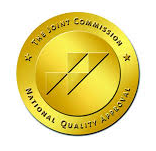Eating Disorders
Do I Need Help?
An eating disorder is not a diet. It is not a passing phase. An eating disorder is life threatening and requires immediate medical attention, assessment and intervention.
Eating disorders, such as anorexia and bulimia, are serious psychological and physical responses to underlying emotional issues. The symptoms are food- and weight-related, but the cause runs more deeply including significant psychological factors and influences. The toll is great, not only to the individual suffering, but also to families and loved ones who witness their suffering.
Eating disorders have “complex, underlying psychological and biological causes,” according to the National Institute of Mental Health. The NIMH also reports that eating disorders frequently co-exist with other psychological issues like depression, substance abuse, and anxiety disorders. Eating disorders have the highest mortality rate of any other psychological illness.
For this reason, it’s important to get help as early as possible. Eating disorders are treatable and full recovery is possible in a safe, supportive environment with knowledgeable, compassionate professionals.
If you’re concerned that you or someone you love has an eating disorder, we hope this information will help you make the decision to seek help or support a loved one in need.
Below you will find information provided by the National Association of Eating Disorders, NEDA, regarding specific eating disorders, including the warning signs and symptom:
COMMON SYMPTOMS OF AN EATING DISORDER
Emotional and Behavioral
In general, behaviors and attitudes that indicate that weight loss, dieting, and control of food are becoming primary concerns
Preoccupation with weight, food, calories, carbohydrates, fat grams, and dieting
Refusal to eat certain foods, progressing to restrictions against whole categories of food (e.g., no carbohydrates, etc.)
Appears uncomfortable eating around others
Food rituals (e.g. eats only a particular food or food group [e.g. condiments], excessive chewing, doesn’t allow foods to touch)
Skipping meals or taking small portions of food at regular meals
Any new practices with food or fad diets, including cutting out entire food groups (no sugar, no carbs, no dairy, vegetarianism/veganism)
Withdrawal from usual friends and activities
Frequent dieting
Extreme concern with body size and shape
Frequent checking in the mirror for perceived flaws in appearance
Extreme mood swings
Physical
Noticeable fluctuations in weight, both up and down
Stomach cramps, other non-specific gastrointestinal complaints (constipation, acid reflux, etc.)
Menstrual irregularities — missing periods or only having a period while on hormonal contraceptives (this is not considered a “true” period)
Difficulties concentrating
Abnormal laboratory findings (anemia, low thyroid and hormone levels, low potassium, low white and red blood cell counts)
Dizziness, especially upon standing
Fainting/syncope
Feeling cold all the time
Sleep problems
Cuts and calluses across the top of finger joints (a result of inducing vomiting)
Dental problems, such as enamel erosion, cavities, and tooth sensitivity
Dry skin and hair, and brittle nails
Swelling around area of salivary glands
Fine hair on body (lanugo)
Cavities, or discoloration of teeth, from vomiting
Muscle weakness
Yellow skin (in context of eating large amounts of carrots)
Cold, mottled hands and feet or swelling of feet
Poor wound healing
Impaired immune functioning
ANOREXIA NERVOSA
Dramatic weight loss
Dresses in layers to hide weight loss or stay warm
Preoccupation with weight, food, calories, fat grams, and dieting. Makes frequent comments about feeling “fat.’
Resists or is unable to maintain a body weight appropriate for their age, height, and build
Maintains an excessive, rigid exercise regime – despite weather, fatigue, illness, or injury
BULIMIA NERVOSA
Evidence of binge eating, including disappearance of large amounts of food in short periods of time or lots of empty wrappers and containers indicating consumption of large amounts of food
Evidence of purging behaviors, including frequent trips to the bathroom after meals, signs and/or smells of vomiting, presence of wrappers or packages of laxatives or diuretics
Drinks excessive amounts of water or non-caloric beverages, and/or uses excessive amounts of mouthwash, mints, and gum
Has calluses on the back of the hands and knuckles from self- induced vomiting
Dental problems, such as enamel erosion, cavities, discoloration of teeth from vomiting, and tooth sensitivity
BINGE EATING DISORDER
Secret recurring episodes of binge eating (eating in a discrete period of time an amount of food that is much larger than most individuals would eat under similar circumstances); feels lack of control over ability to stop eating
Feelings of disgust, depression, or guilt after overeating, and/or feelings of low self-esteem
Steals or hoards food in strange places
Creates lifestyle schedules or rituals to make time for binge sessions
Evidence of binge eating, including the disappearance of large amounts of food in a short time period or a lot of empty wrappers and containers indicating consumption of large amounts of food
OTHERWISE SPECIFIED FEEDING OR EATING DISORDER (OSFED)
Because OSFED encompasses a wide variety of eating disordered behaviors, any or all of the following symptoms may be present in people with OSFED.
Frequent episodes of consuming very large amount of food followed by behaviors to prevent weight gain, such as self-induced vomiting
Evidence of binge eating, including disappearance of large amounts of food in short periods of time or lots of empty wrappers and containers indicating consumption of large amounts of food
Self-esteem overly related to body image
Dieting behavior (reducing the amount or types of foods consumed)
Expresses a need to “burn off” calories taken in
Evidence of purging behaviors, including frequent trips to the bathroom after meals, signs and/or smells of vomiting, presence of wrappers or packages of laxatives or diuretics
AVOIDANT RESTRICTIVE FOOD INTAKE DISORDER (ARFID)
Dramatic weight loss
Limited range of preferred foods that becomes narrower over time (i.e., picky eating that progressively worsens)
Fears of choking or vomiting
No body image disturbance or fear of weight gain
PICA
The persistent eating, over a period of at least one month, of substances that are not food and do not provide nutritional value
Typical substances ingested tend to vary with age and availability. They may include paper, soap, cloth, hair, string, wool, soil, chalk, talcum powder, paint, gum, metal, pebbles, charcoal, ash, clay, starch, or ice.
RUMINATION DISORDER
Repeated regurgitation of food for a period of at least one month. Regurgitated food may be re-chewed, re-swallowed, or spit out
If occurring in the presence of another mental disorder (e.g., intellectual developmental disorder), it is severe enough to warrant independent clinical attention
Other Food & Behavior Concerns
ORTHOREXIA
Cutting out an increasing number of food groups (all sugar, all carbs, all dairy, all meat, all animal products)
An increase in concern about the health of ingredients; an inability to eat anything but a narrow group of foods that are deemed ‘healthy’ or ‘pure’
Spending hours per day thinking about what food might be served at upcoming events
Body image concerns may or may not be present
COMPULSIVE EXERCISE
Exercise that significantly interferes with important activities, occurs at inappropriate times or in inappropriate settings, or occurs when the individual exercises despite injury or other medical complications
Intense anxiety, depression and/or distress if unable to exercise
Exercise takes place despite injury or fatigue
DIABULIMIA
Increasing neglect of diabetes management; infrequently fills prescriptions and/or avoids diabetes related appointments
Secrecy about diabetes management; discomfort testing/injecting in front of others
Fear that “insulin makes me fat”
Restricting certain food or food groups to lower insulin dosages
A1c of 9.0 or higher on a continuous basis
Special thanks to the National Eating Disorder Associations website. For more information on the specifics of the provided information please go to their website at: National Eating Disorder Association
“Eating disorders are mental illnesses that have physical and medical manifestations. Eating disorders come in all shapes and sizes. You can’t look at somebody and see whether they have an eating disorder or not.”



